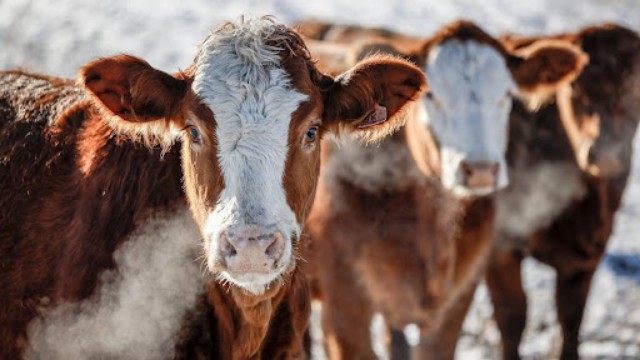
Steve Karnowski Photo.
Smoke originating from wildfires in Canada has once again caused health warnings across the Upper Midwest and Montana, marking the second consecutive year of such occurrences. Fires in British Columbia and Alberta have led to hazy skies over parts of Montana, the Dakotas, Minnesota, and Wisconsin over the weekend and into Monday morning.
The Minnesota Pollution Control Agency issued its first statewide air quality alert of the season on Sunday due to unhealthy air pollution levels caused by the smoke. The alert, initially scheduled to end at noon on Monday, was extended until 11 p.m. for southern Minnesota, including the Twin Cities metro area. The Wisconsin Department of Natural Resources also issued advisories for unhealthy air quality for sensitive individuals across the northern two-thirds of the state on Sunday, with the advisory extended until midnight on Monday.
Michigan's Upper Peninsula experienced hazy skies on Monday, with some residents reporting the smell of smoke. Meteorologists forecasted that prevailing winds could carry the smoke south and east, potentially reaching as far as Iowa and Chicago by late Tuesday or early Wednesday. However, the majority of the smoke was expected to remain over Minnesota, Wisconsin, and northern Michigan, hovering between one to two miles above the ground.
Last year, a record number of wildfires in Canada forced over 235,000 people to evacuate and resulted in thick smoke spreading into parts of the United States, prompting health advisories in multiple cities. By mid-May this year, there were 90 fires burning in Canada, compared to 200 fires during the same period last year. One significant fire near Fort Nelson in British Columbia's far northeastern corner has already led to evacuations.
The likelihood of more wildfires this summer remains high, particularly in forests experiencing intense drought conditions in northeastern British Columbia, northwestern Alberta, and the southern Northwest Territories. Climate change has been identified as a contributing factor, with hot, dry weather doubling the chances of extreme fire weather. Scientists suggest that increasing fire activity aligns with projections of a warming climate.
While drought conditions in Ontario and Quebec are expected to be less severe in the coming months, higher-than-normal temperatures may offset any moisture, potentially fueling wildfires. The variability of meteorological conditions makes it challenging to predict the extent of fire activity this summer.
The potential impact of Canadian wildfires on the United States remains uncertain. Last year, smoke from fires in Quebec and Ontario affected the Eastern U.S., reaching as far south as the Mississippi River Valley and Manhattan. However, whether similar conditions will occur this year remains to be seen. Meteorologists highlight the unpredictability of weather patterns and the variability of wind directions in determining the extent of smoke dispersion.
Overall, the recurrence of Canadian wildfire smoke poses health risks and underscores the ongoing challenges posed by wildfires and climate change. While efforts are being made to monitor and mitigate the impact of wildfires, uncertainties remain regarding their potential consequences on air quality and public health.















